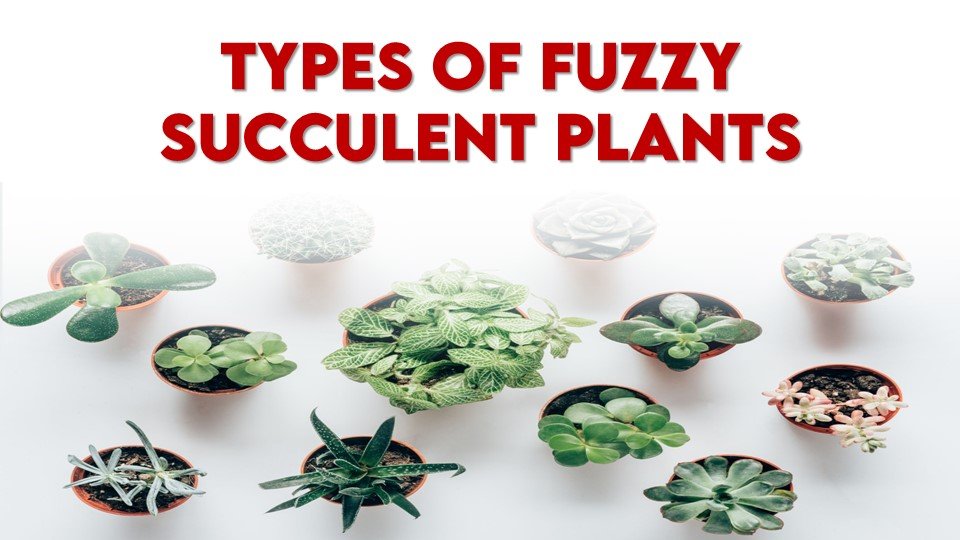Best 20 Types of Fuzzy Succulent Plants
The huge diversity of succulents is always a hot topic among plant enthusiasts and ornamental plant specialists. There is hardly anyone who hasn’t had these beauties before. This never-ending trend of succulents over the years has led to an upsurge of new businesses along with mind-blowing artistic ideas in this field.
But have you wondered, why some succulents show some unusually different and visually appealing characteristics? Like shiny wax coatings on the rigid leaves or turning red during summer. Well, These are some of the coping mechanisms of these plants from unfavourable environmental conditions. In the same way, a few succulents produce trichomes over the leaves that look like fuzz or hairs, which allows them to tolerate hot summers and increases water retention capacity.
To broaden the spectrum of our understanding of the resilience and beauty of these plants, here is a list of different types of fuzzy Succulent Plants, which will tantalise you to adopt one today. Most of these belong to the genus Crassula Kalanchoe and Echeveria with common names based on the animals’ body parts due to their similar appearances.
Before you go through the list, let us first understand why fuzziness is a boon to the succulents.
- Fuzziness allows shade over the leaves, hence the water losses will decrease and plants could thrive longer in the absence of rain or watering.
- This also abrupts the flow of wind along the leaf surface to prevent physical damage or moisture losses in plants.
- Although this fuzziness is completely non-toxic and safe to humans and animals, it is not liked by herbivores as food. Rabbits and Deer hate this fuzziness in their food.
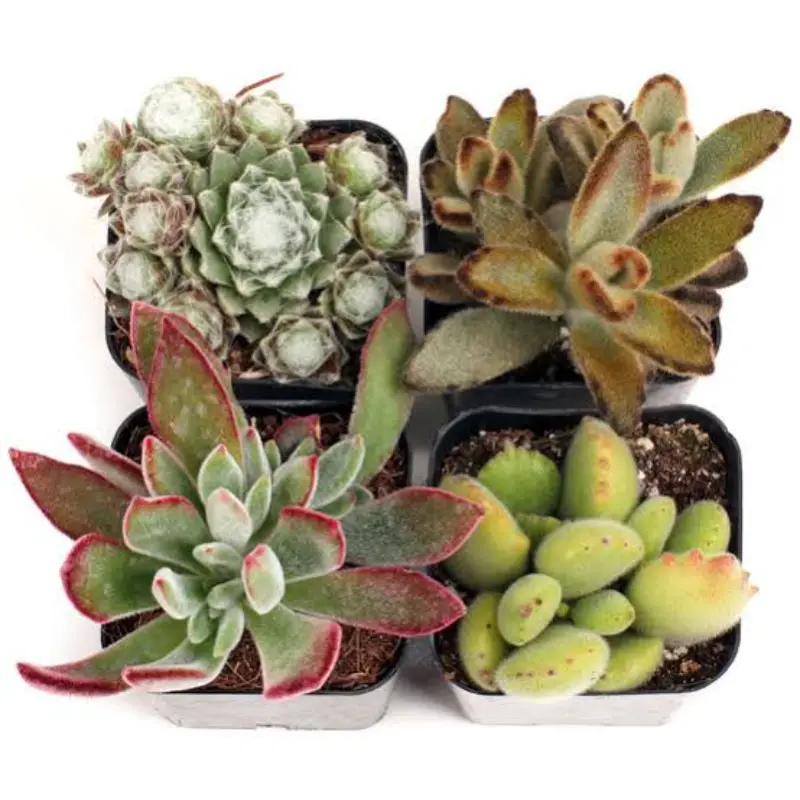
Types of Fuzzy Succulent Plants
All succulents are quite similar in terms of their need for nutrients and watering, yet there are many differences in their colour, structure and growth habits. There are hundreds of succulents in nature, but here are the ones that have already taken up space in our homes.
1. Kalanchoe / Silver Panda Plant
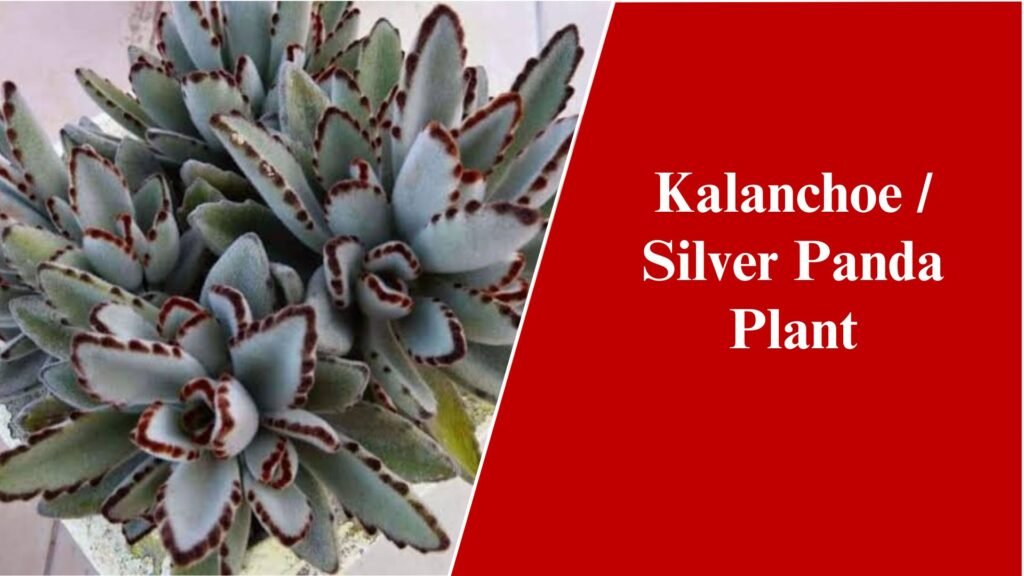
Kalanchoe is the most common succulent you will ever come across. It has fleshy upright green-silver leaves with a contrast of dark brown margins. The silver colour of leaves is mainly due to the presence of dense fuzz on its surface. The plant emerges in a rosette-like structure which is adored as a good feature for succulent modern art. Like other succulents, it can be propagated by Stem or leaf cuttings.
‘Teddy Bear’, ‘Cinnamon’, and ‘ Black Tie’ are some of the most common cultivars of Kalanchoe for indoor pots and decoration. They grow well indoors with appropriate amounts of sunlight reaching them.
| Common Name | Silver Panda Plant |
| Scientific Name | Kalanchoe tomentose |
| Hardiness Zone | 9-11 |
| Sunlight | Full sun to partial shade |
| Temperature | 60-75°F (16-24°C) |
| Water | Water sparingly |
| Soil | Well-draining, sandy soil |
2. Adromischus cristatus
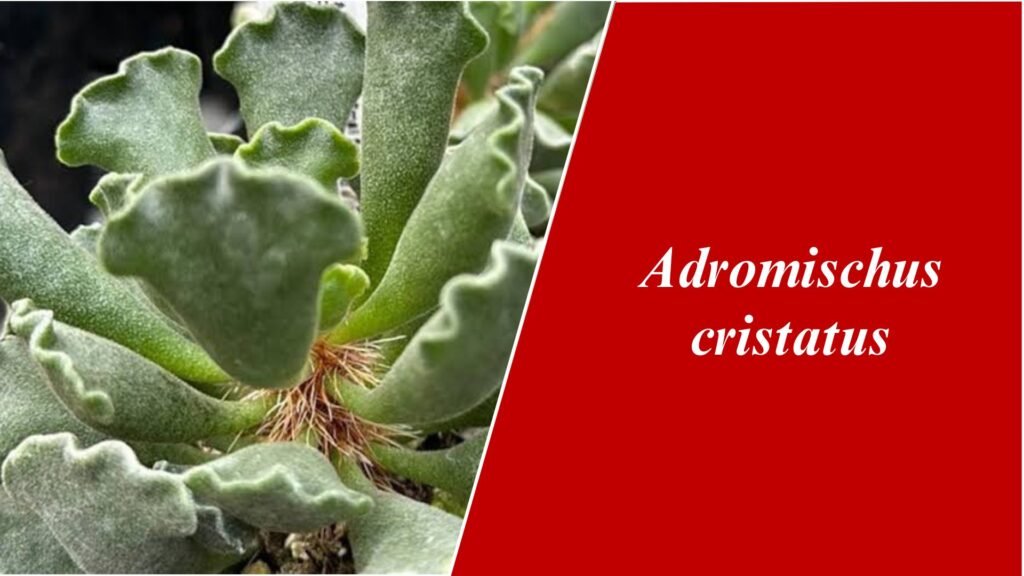
This gorgeous succulent tends to flur near the ground in a rosette-like structure. It is one of the most popular plants to be used for rock gardens and succulent art practices. This plant bears flowers after three to four years, after which it dies. But worry not, this dwarf spreads its branches vertically and allows easy propagation.
The fuzziness in its leaves may not appear in its early life but as it matures and is exposed to different seasons, beautiful fuzz starts growing over its leaves. The cultivar ‘variegata’ of this succulent appears much darker with white edges.
| Common Name | Key Lime Pie Plant, Crinkle leaf plant |
| Scientific Name | Adromischus cristatus |
| Hardiness Zone | 9-11 |
| Sunlight | Full sun to partial shade |
| Temperature | 60-80°F (16-27°C) |
| Water | Water sparingly, drought-tolerant |
| Soil | Well-draining soil |
3. Kalanchoe beharensis ‘Fang’
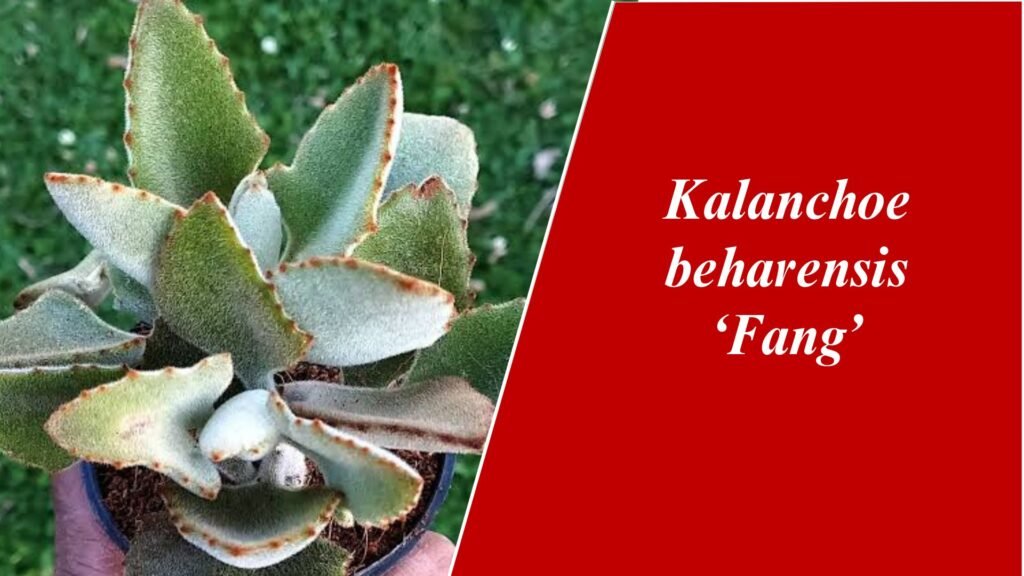
This plant appears to be silvery green with toothed brown edges. This one originated from Madagascar and is known for its serrated leaves. Unlike most of the Fuzzy succulents with white trichomes all over the leaves, this one is smooth from the back side and brown trichomes appear on the front side.
K. beharensis can be used as an indoor houseplant with minimal care. The best part is that it is non-toxic and perfect for homes with children and pets. One can easily propagate it via cuttings. It often forms new plantlets on the surface of the leaf, which can also be used to multiply the plant.
| Common Name | Fang Plant, Velvet Leaf Plant |
| Scientific Name | Kalanchoe beharensis |
| Hardiness Zone | 9-11 |
| Sunlight | Full sun to partial shade |
| Temperature | 60-75°F (16-24°C) |
| Water | Water moderately |
| Soil | Well-draining, gritty soil |
4. Echeveria doris ‘Taylor’
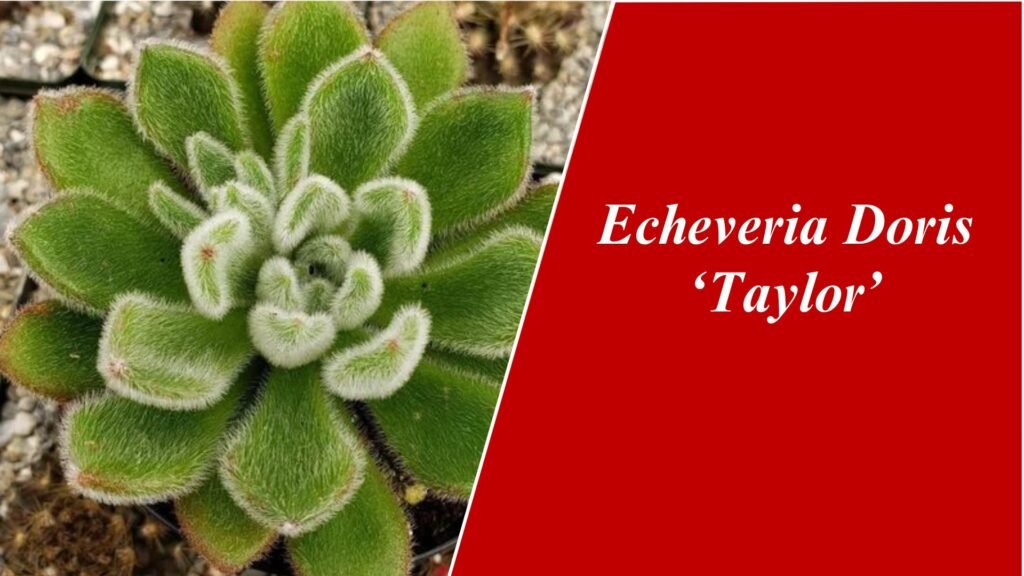
E. doris is another type of rosette succulent with a height of up to five centimetres only. It produces orange-red flowers during spring-autumn. The margins of the plant also change its colour to red or orange when exposed to bright sunlight for longer hours. It has fine white fuzz all over the leaves. It is one of the best succulents to display in your home.
| Common Name | Taylor Plant |
| Scientific Name | Echeveria Doris |
| Hardiness Zone | 9-11 |
| Sunlight | Full sun to partial shade |
| Temperature | 65-75°F (18-24°C) |
| Water | Low water, drought-tolerant, soak and dry method |
| Soil | Well-draining soil |
5. Delosperma echinatum
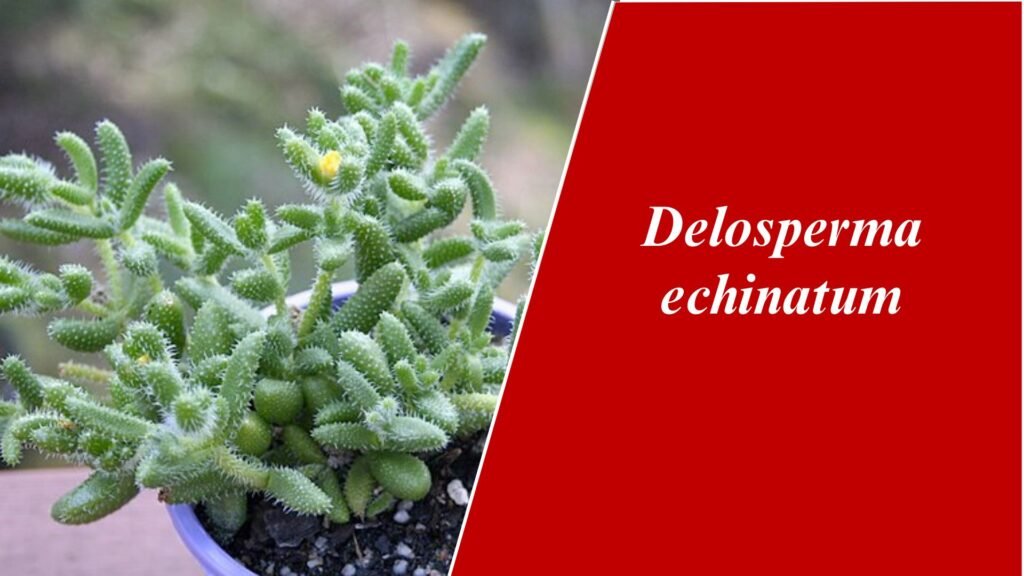
As the name suggests, these trichomes on the plant do appear like echinus or spines. That’s also how it got popularised with the name ‘Pickle plant’, due to its resemblance with gherkins. The plant may or may not turn red in high hours of sunlight but it surely bears bright pink or yellow singular flowers.
It is best to prune delosperma timely and remove the dead parts as it invites many bugs and diseases. The succulent originates from South Africa and is propagated by cuttings for commercial production.
| Common Name | Pickle Plant |
| Scientific Name | Delosperma echinatum |
| Hardiness Zone | 8-10 |
| Sunlight | Full sun |
| Temperature | 60-80°F (16-27°C) |
| Water | Water moderately |
| Soil | Well-draining, sandy soil |
6. Crassula mesembryanthemoides
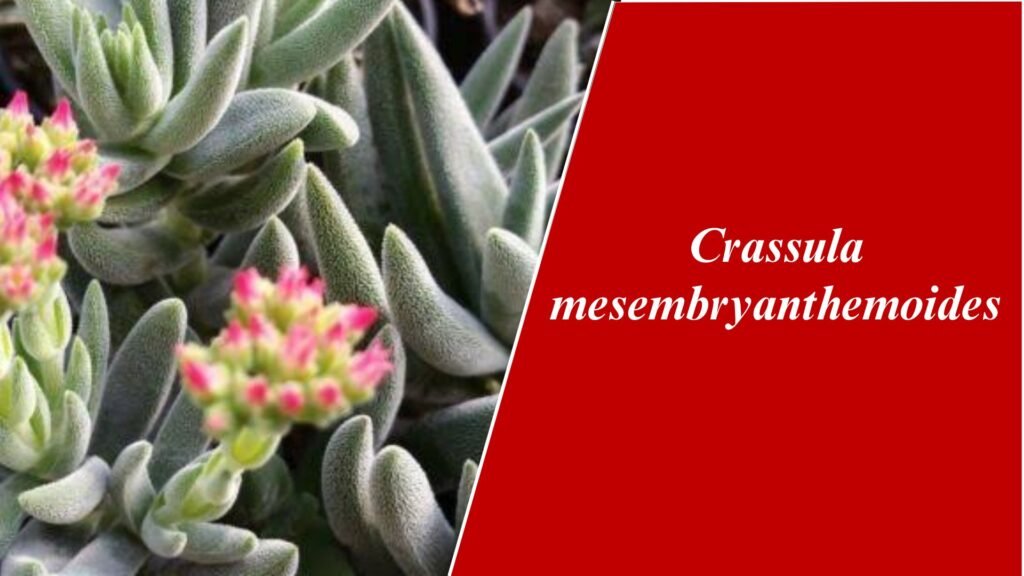
It is one of the vertically growing succulents with white fuzz all over the leaves and stems, but as the plant matures, this fuzziness disappears on the stem which becomes woody and brown. It can grow up to forty centimetres. It has long elliptical tips and bears small, white, bell-shaped flowers in spring till autumn. It is best to propagate it via cuttings.
| Common Name | Crassula mesembryanthemoides |
| Scientific Name | Crassula mesembryanthemoides |
| Hardiness Zone | 9-11 |
| Sunlight | Full sun to partial shade |
| Temperature | 65-75°F (18-24°C) |
| Water | Water sparingly, drought-tolerant |
| Soil | Well-draining, gritty soil |
7. Crassula barbata
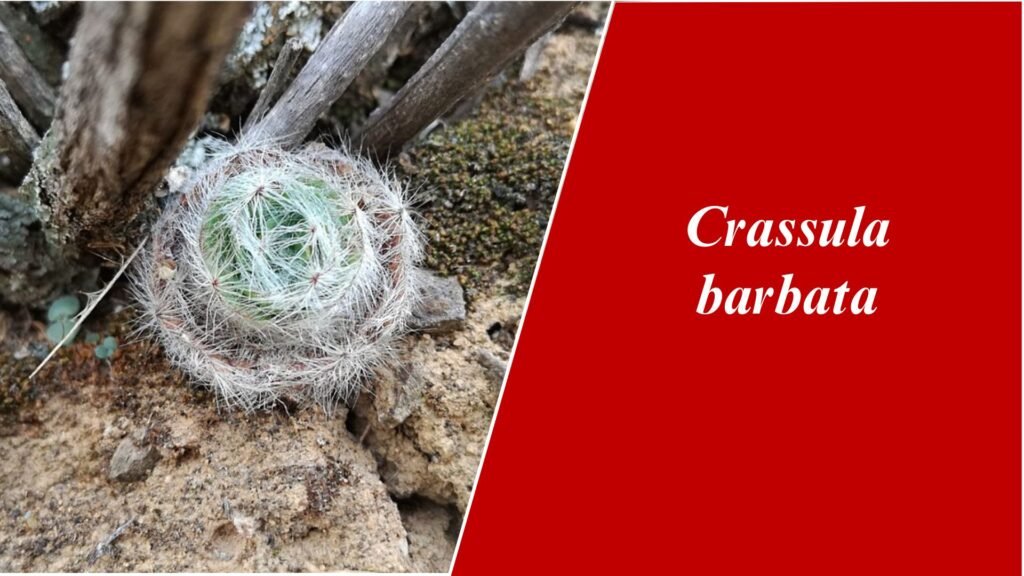
C. barbata has a unique rosette structure, covered with spine-like fuzzy hairs; dense hairs are present on the border of the leaves. It can grow up to 5 cm from ground level. It is drought-tolerant and excellent for rock gardens.
It bears beautiful white-pink flowers during spring from a branch that originated from the centre of the rosette. After flowering, the plant dies, but as this happens, the base produces several new rosettes, which can be used to make new plants, and if left alone in the pot, a whole bouquet of rosettes will emerge.
| Common Name | Bearded-leaved Crassula |
| Scientific Name | Crassula barbata |
| Hardiness Zone | 8-10 |
| Sunlight | Full sun to partial shade |
| Temperature | 60-80°F (16-27°C) |
| Water | Water sparingly, allow to dry between waterings |
| Soil | Well-draining soil |
8. Echeveria setosa ciliata
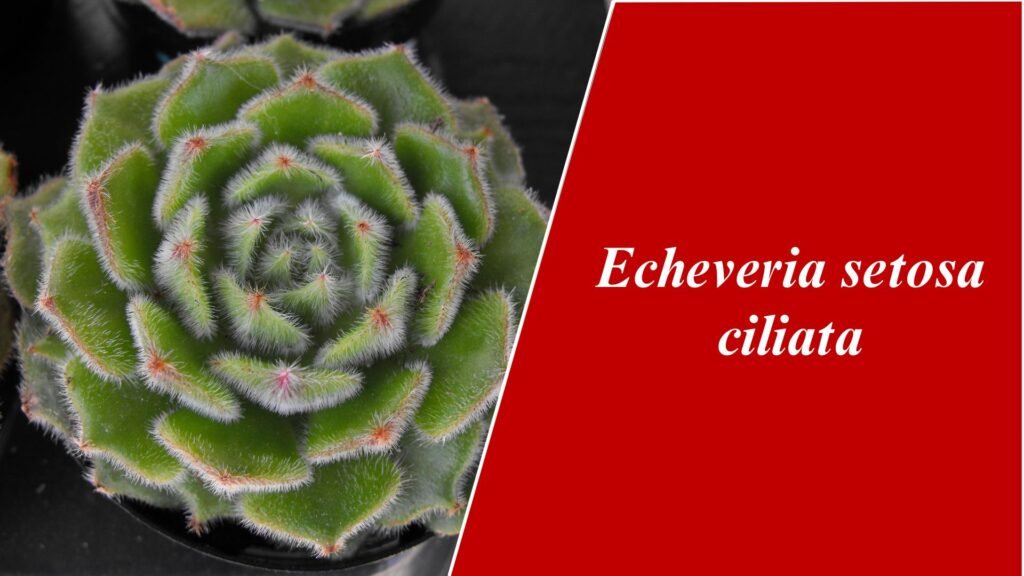
E. setosa can grow up to 4 cm high and about 6 cm wide. The plant has fine hairs all over the leaves, which are called ‘glochids‘. These glochids make the plant less favourable for its use as a houseplant because they cause severe irritation on the skin. But the yellow flowers of this succulent with red tip never fail to attract gardeners. It can be easily multiplied by separating pups that emerge from their basal part, but it is also propagated via cuttings.
| Common Name | Woolly Rose, Mexican Firecracker |
| Scientific Name | Echeveria setosa |
| Hardiness Zone | 9-11 |
| Sunlight | Full sun to partial shade |
| Temperature | 65-75°F (18-24°C) |
| Water | Low water, drought-tolerant |
| Soil | Well-draining soil |
9. Cotyledon tomentosa
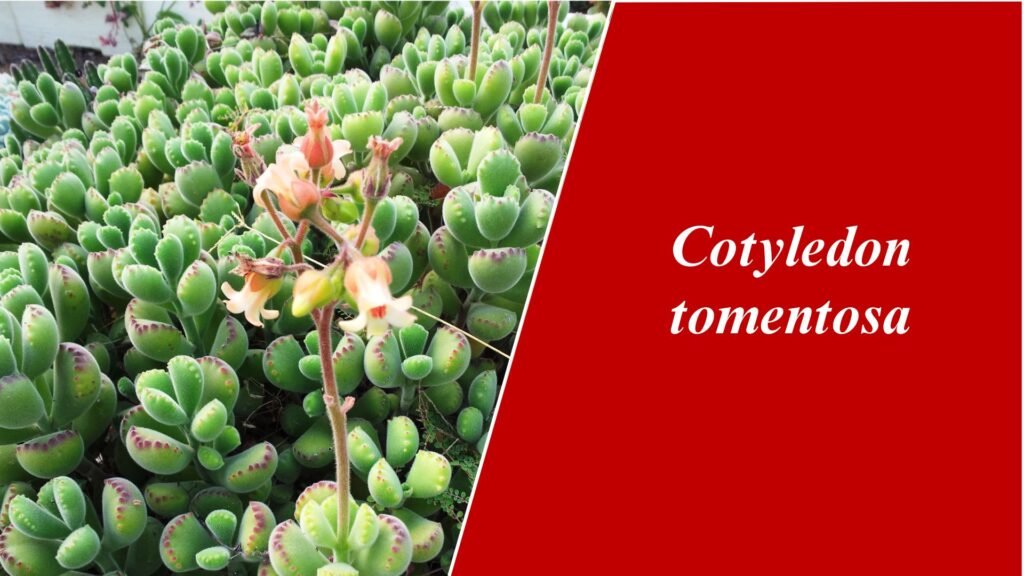
This one is a cutie here, C. tomentosa has 3-8 brown teeth on the tip of rounded leaves, which resembles the bear’s paw. The plant grows branches and leaves are flat to spherical with fuzz all over it. During summer till autumn, it produces huge bell-shaped orange-yellow flowers that appear on the longest stalk emerging from its branches.
Though the appearance of this succulent is tempting, never let it near your children or pets, as it is highly toxic due to the presence of toxins like cardiac glycosides and bufadienolides. Only one gram of this toxin is lethal to livestock and dogs.
| Common Name | Bear’s paw plant |
| Scientific Name | Cotyledon tomentosa |
| Hardiness Zone | 9-11 |
| Sunlight | Full sun to partial shade |
| Temperature | 65-75°F (18-24°C) |
| Water | Water sparingly, drought-tolerantm |
| Soil | Well-draining soil |
10. Plectranthus tomentosa
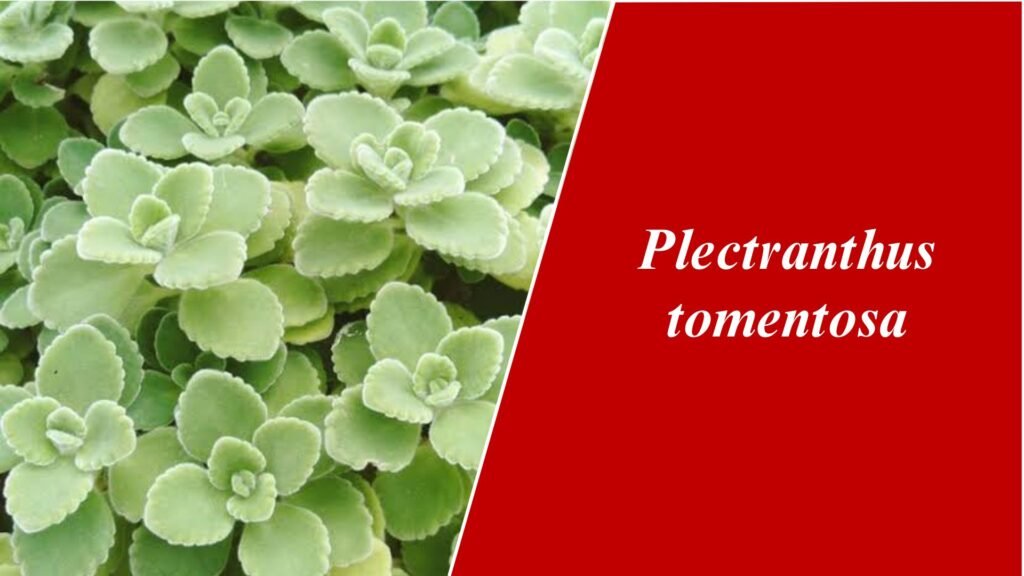
The unique smell of this plant has made it so popular among succulent enthusiasts. This smell is quite similar to Vicks Vaporub, and yes you can also use it to clear your nasal passages.
There are forty-four types of volatile compounds present in this succulent that are responsible for its smell, and half of these are terpenoids. Among these terpenoids, the most harmful is limonene, which plays an important role in the phytochemical industry but is extremely harmful to beneficial worms in the soil, so it is better to plant them in a pot only.
Other than its pharmaceutical and phytochemical uses, this plant is an excellent ornamental with patterned leaves and wide spreading habit. You can also grow it in hanging baskets. It also attracts bees and butterflies and you can easily propagate it by stem cuttings.
| Common Name | Vicks Plant |
| Scientific Name | Plectranthus tomentosa |
| Hardiness Zone | 10-11 |
| Sunlight | Partial shade |
| Temperature | 65-75°F (18-24°C) k |
| Water | Water moderately |
| Soil | Well-draining soil |
11. Crassula congesta
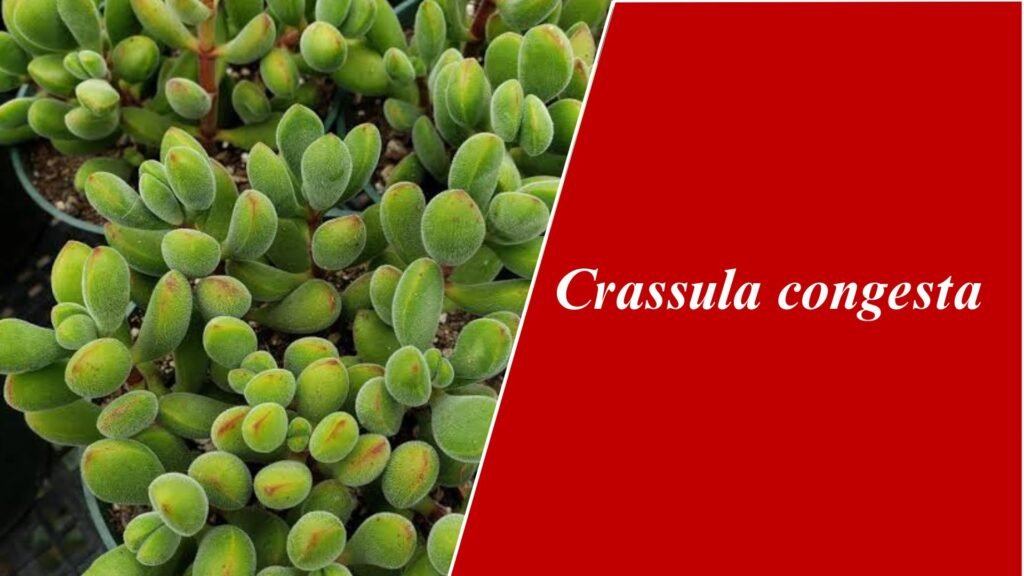
It is a biennial monocarpic succulent with sweet-scented white flowers, which appear like the seeds of a daisy. It grows up to a height of ten centimetres. The stem of this plant can’t be seen, as the leaves of the plants are concave underside and convex on the upper side, which stacks over one another. These leaves are reddish-green and triangular but flat. The single flower of this plant is a bouquet appearing on this stack of leaves.
It is one of the easiest succulents to propagate but it dies in 3-4 years, so propagating it timely is the best option to keep it. C. congesta is one of the best succulents to gift someone, after all, who won’t like a plant that doesn’t need much care and bears beautiful and scented flowers?
| Common Name | Green Balls |
| Scientific Name | Crassula congesta |
| Hardiness Zone | 9-11 |
| Sunlight | Full sun to partial shade |
| Temperature | 65-75°F (18-24°C) |
| Water | Moderate, allow to dry out between waterings |
| Soil | Well-draining, sandy soil |
12. Kalanchoe eriophylla
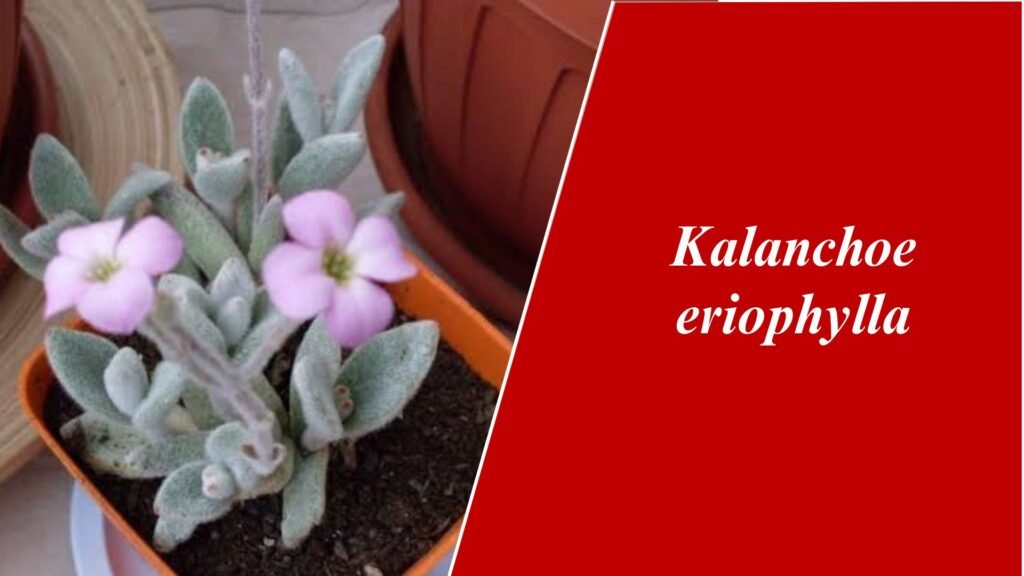
K. eriophylla is only up to 4-10 cm in height and its whole body is covered with velvety or rather smooth white hairs, which are non-toxic. It is a widely adapted houseplant due to its huge pink-violet flowers with yellow centre, which grow upon a twenty-centimetre long stalk in clusters of 2-7 flowers every year. It is perennial and requires repotting every few years. Be gentle while repotting the plant, as its leaves may snap easily. Like other succulents, it can also be propagated easily by stem cuttings.
| Common Name | Snow White Panda Plant |
| Scientific Name | Kalanchoe eriophylla |
| Hardiness Zone | 9-11 |
| Sunlight | Full sun to partial shade |
| Temperature | 60-75°F (16-24°C) |
| Water | Water sparingly |
| Soil | Well-draining, gritty soil |
13. Echeveria harmsii
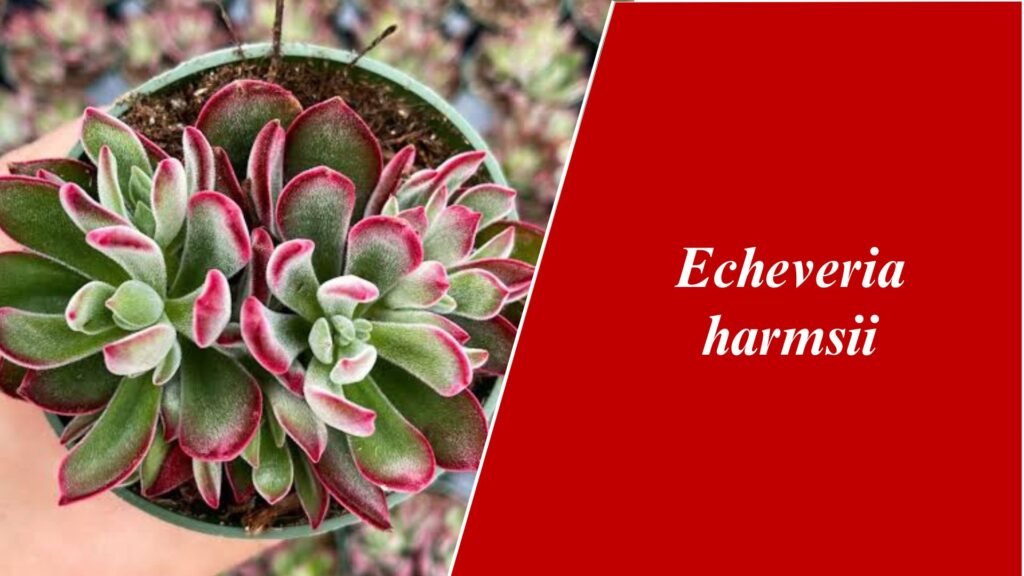
If you want to experience the best looks of E. harmsii, plant it near a place that receives at least six hours of sunlight. It will allow the lining of its fuzzy, spoon-shaped leaves to turn bright red. But the plant is sensitive to frost, so an extra is needed in areas with low temperatures and other areas during winters.
E. Harmsii is also non-toxic to children and pets, but still keeps it away from your livestock to hamper the growth of this plant.To accelerate the blooming of gorgeous yellow flowers in the plant, just increase the number of daily sunlight hours. This flower has sweet nectar which attracts bees, butterflies and hummingbirds in their native region. Though this plant can be easily propagated, the plant leaves are delicate and shatter easily, therefore, a little patience becomes necessary.
| Common Name | Ruby Slippers, Red Devotion |
| Scientific Name | Echeveria harmsii |
| Hardiness Zone | 9-11 |
| Sunlight | Full sun to partial shade |
| Temperature | 65-75°F (18-24°C) |
| Water | Use the bottom watering technique or water sparingly. |
| Soil | Well-draining soil |
14. Sempervivum Ciliosum
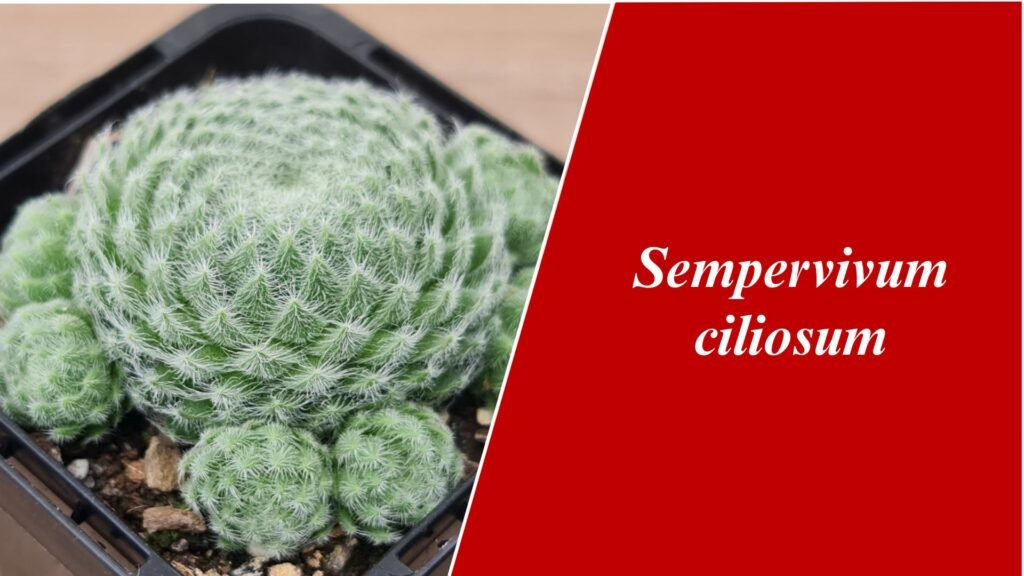
S. ciliosum is native to the Balkans, Europe, it is among the stonecraft family of flowering succulents, which grows up to 7 cm in height. It is an evergreen rosette shaped Succulent with fuzz all over and multiplies rapidly, due to the production of multiple chicks from the mother plant(hen) like other housleeks.
The term ‘ciliosum’ means ‘small fringe’ which denotes the fuzz that appears like eyelashes. Though much popular among gardeners, and succulent artists, S. ciliosum can’t thrive in shady areas or indoor conditions, it needs at least six hours of sunlight as it is a minimal need but extreme hot weather is inappropriate too.
| Common Name | Eyelash Houseleek |
| Scientific Name | Sempervivum ciliosum |
| Hardiness Zone | 5-8 |
| Sunlight | Full sun |
| Temperature | -30°F to 85°F (-34°C to 29°C) |
| Water | Low water, drought-tolerant |
| Soil | Well-draining, gritty soil |
15. Crassula lanuginosa var. Pachystemon ‘David’
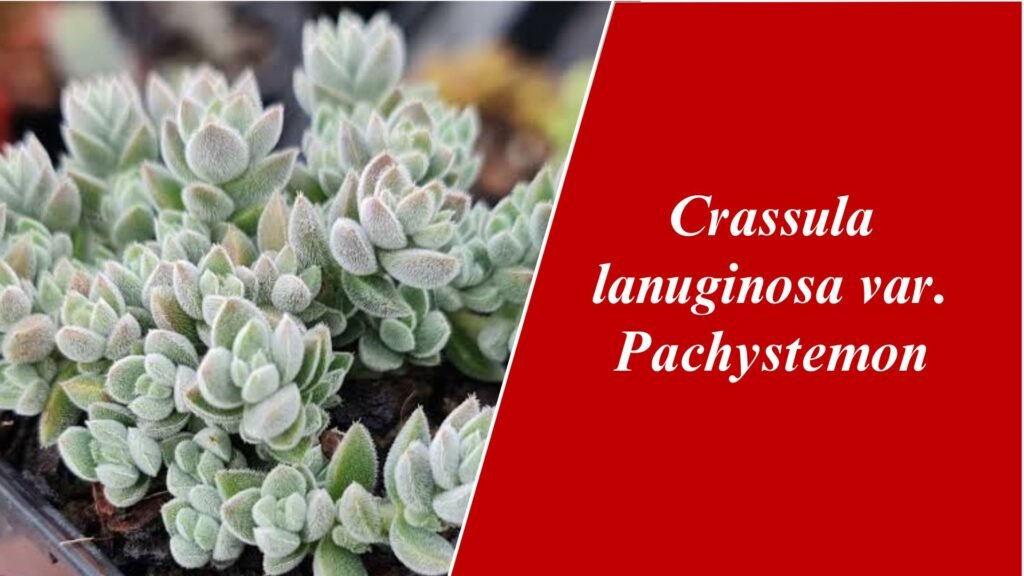
It is one of the tiniest cultivars of the genus Crassula that grows only up to five centimetres but spreads like a green carpet all over the place. There are fine white hairs all over the plant that give it a velvety texture and protect it from sap-sucking insects too.
Crassula David appears bronze to red in winter and red hues during summer along with small, white flowers in clusters during summer which last up to autumn. It is named after its collector David Cumming, who collected the plant from South Africa in the 1980s. It can be well used in table pots, hanging baskets, rock gardens and as a ground cover. It can also be propagated by stem cuttings.
| Common Name | Crassula David |
| Scientific Name | Crassula lanuginosa var. Pachystemon |
| Hardiness Zone | 9-11 |
| Sunlight | Full sun to partial shade |
| Temperature | 65-80°F (18-27°C) |
| Water | Moderate, let the soil dry between waterings |
| Soil | Well-draining soil |
16. Echeveria pulvinata ‘frosty’ crested
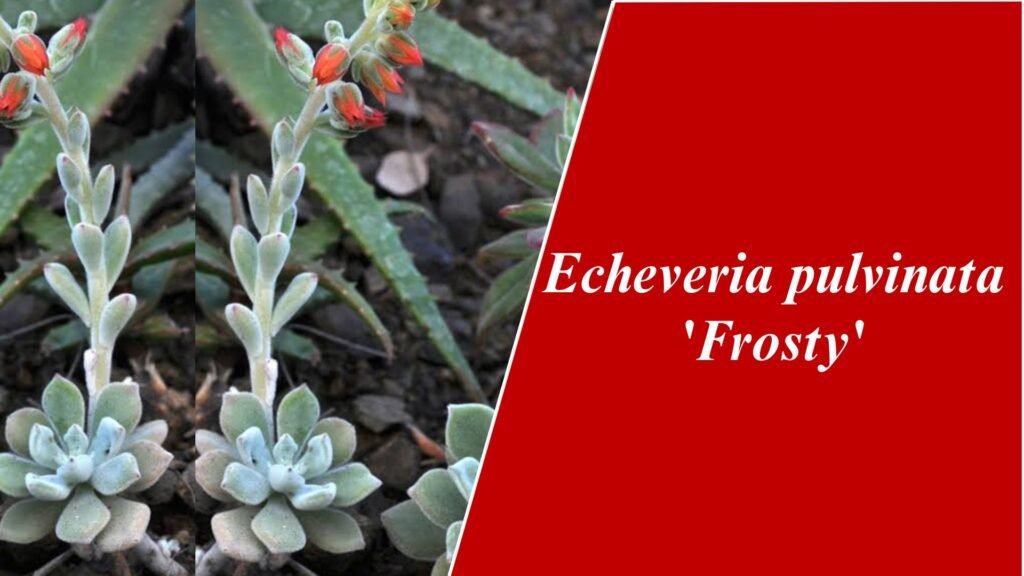
This succulent is popularised by the name ‘ Firecracker Plant’ because of its bell-shaped bright red and orange flowers with dramatic stalks during winter, unlike most succulents that bloom during spring. It can bear up to twenty flowers in a single stalk. The fleshy leaves of the plant are covered with velvety hairs which make it look white, hence it is also popularised by the name ‘ White Chenille Plant’.
This succulent grows upright, reaching up to a height of 9-12 inches. It is one of the nursery cultivated cultivars, specially made for ornamental purposes. It thrives best in warm temperatures with less humidity and can’t tolerate frost. E. Pulvinata can be easily propagated from offshoots or a single leaf or stem cuttings.
| Common Name | Frosty Crested, Eche crested, Firecracker Plant, White Chenille Plant ‘frosty’ crested |
| Scientific Name | Echeveria pulvinata |
| Hardiness Zone | 9-11 |
| Sunlight | Full sun to partial shade |
| Temperature | 65-75°F (18-24°C) |
| Water | Water sparingly, and let the soil dry between waterings |
| Soil | Well-draining, sandy or cactus mix soil |
17. Aeonium tabuliforme
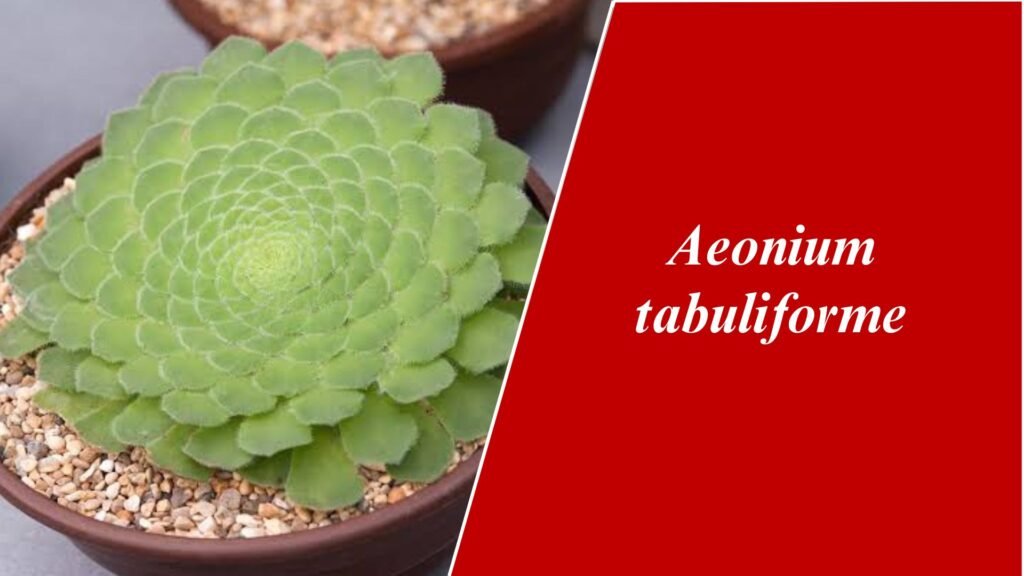
It is native to the Canary Islands and is about five centimetres tall with a diameter of up to forty-five centimetres. The epithet ‘tabuliforme’ means ‘ flat like a table’, it is the flat rosette appearance of the succulent. It can thrive well in hardy conditions and produces a raceme of yellow flowers in a stalk that emerges from the centre of the rosette structure, once in 3-4 years, after which it dies.
It has fine fuzzy hairs in the lining of the leaves that are non-toxic and spineless. It can propagate via small plantlets that emerge from its bottom when it nearly dies.
| Common Name | Aeonium Dinner Plate, Saucer Plant |
| Scientific Name | Aeonium tabuliforme |
| Hardiness Zone | 9-11 |
| Sunlight | Full sun to partial shade |
| Temperature | 65-80°F (18-27°C) |
| Water | Low water, water sparingly |
| Soil | Well-draining soil |
18. Sempervivum arachnoideum
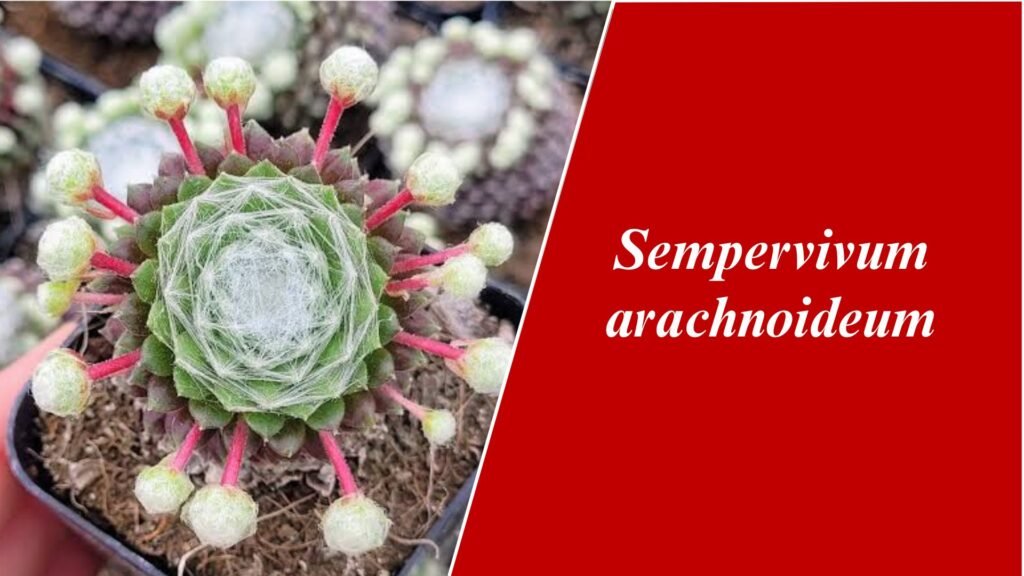
The hairs on these succulents are similar to webs made by spiders over the rosette, upright leaves. It is one of those desk plants that could take space in around your books, and kitchens, and could be gifted as a small souvenir.
It is highly valued due to its high multiplication by producing offsets. At the centre of the cobweb, the singular pink flower arises. The wide-spreading nature can be well utilised in rock gardens and succulent art.
| Common Name | Houseleek, Hens and Chicks, Cobweb |
| Scientific Name | Sempervivum arachnoideum |
| Hardiness Zone | 5-8 |
| Sunlight | Full sun |
| Temperature | -30°F to 85°F (-34°C to 29°C) |
| Water | Low water, drought-tolerant |
| Soil | Well-draining, gritty soil |
19. Senecio haworthii
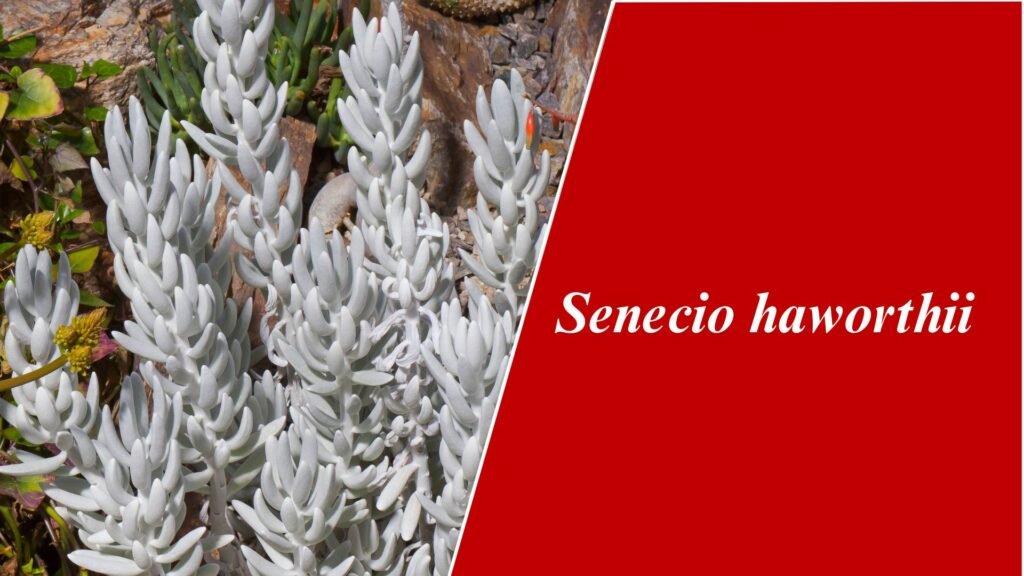
The fleshy, cylindrical leaves of S. haworthii are covered in white fuzz, which leads to its cocoon-like appearance that helps it stand out among other succulents. I can tolerate hot weather but not frost, which means the succulent can’t survive in areas with temperatures below 1.1°C. The older leaves of the plant can be differentiated with a brown tinge present on the tip of these leaves. During spring S. haworthii tends to produce sweet yellow flowers. It can also be propagated by stem cuttings.
| Common Name | Woolly Senecio, Cocoon Plant |
| Scientific Name | Senecio haworthii |
| Hardiness Zone | 9-11 |
| Sunlight | Full sun |
| Temperature | 50-70°F (10-21°C) |
| Water | Water sparingly, let dry out between waterings |
| Soil | Well-draining, sandy soil |
20. Cyanotis somaliensis
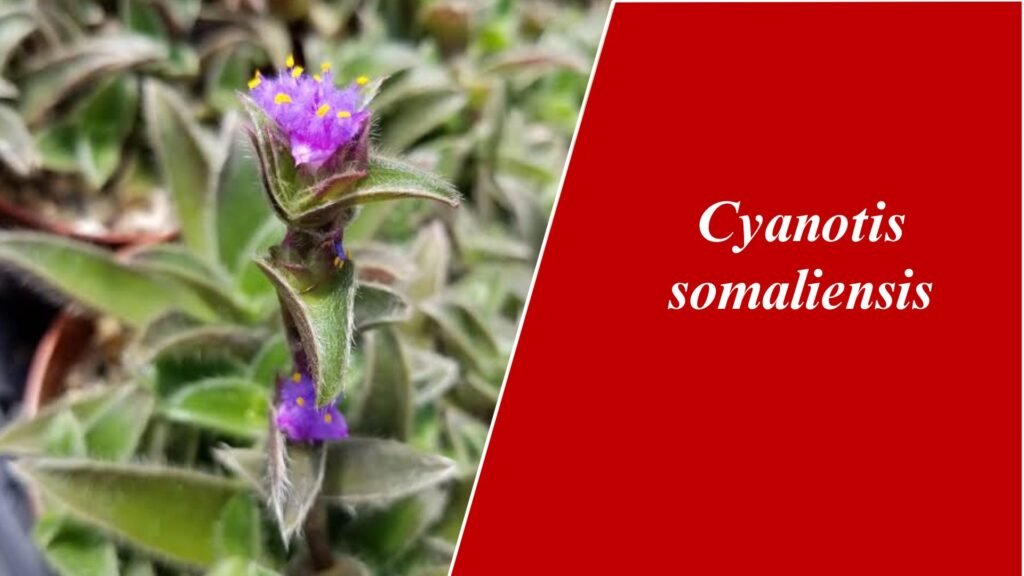
If you ever had a cat before, this one is going to hit your nostalgia. The lanceolate light leaves covered with thin white hair look like the cat’s ear, that’s why the plant is commonly known as Kitten’s ears. It has a thin succulent stem, with a creeping type growth habit. It will also flourish well on trellis or even on hanging baskets. It gets covered with tender velvety purple-violet flowers during spring which provides a contrast to its leaves.
It can be easily re-rooted and multiplied from stem cuttings and easy to thrive in most of the hot climatic regions, but it can’t survive in frost, so it’s best to keep them indoors during winter or in a glasshouse. Though it is used as an ornamental succulent worldwide, it is endemic in its home state, Somalia.
| Common Name | Kitten Ears |
| Scientific Name | Cyanotis somaliensis |
| Hardiness Zone | 10-12 |
| Sunlight | Full sun to partial shade |
| Temperature | 65-75°F (18-24°C) |
| Water | Low to moderate, drought-tolerant |
| Soil | Well-draining, sandy soil |
Conclusion
All the arachnophobes may have found these fuzzy succulents a little hard to adopt, but this goofiness is what makes these beauties so special. Succulents are always the best choice as a houseplant, and this unique characteristic is a cherry on top. The resilient nature of these dwarfs is always an inspiration to a committed gardener. If you are willing to become one, try these today.
In the series of Succulents now we have added the types of fuzzy succulent plants. Other species of plant also produce fuzz, but the fuzz in succulents is a protective covering that allows them to thrive in extreme weather conditions. The diversity of succulents is always enthralling but if you’re still obscure about anything related to these succulents, we are here to help, till they stay tuned!
ALSO READ

